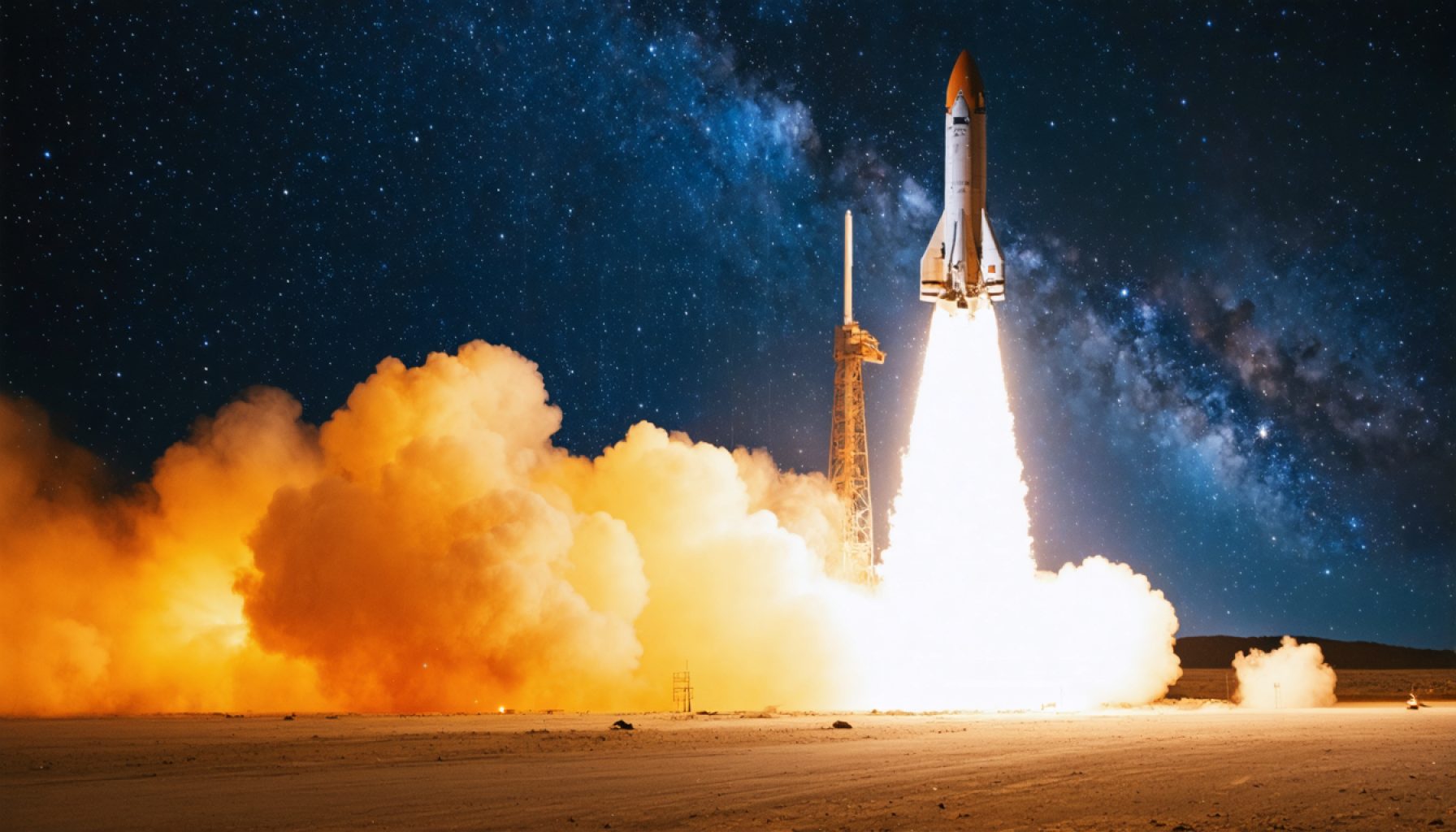- The recent rocket launches highlight a contrast in strategies between SpaceX and the European Union, illustrating divergent approaches to space exploration.
- SpaceX’s Starship experienced a spectacular failure shortly after liftoff, yet this setback serves as a learning opportunity and fuels their ongoing ambition to reach Mars.
- The European Union’s successful launch of the Ariane 6 symbolizes a significant step toward achieving independence and geopolitical security in space endeavors.
- Chris Boshuizen underscores the importance of innovation through SpaceX’s audacious tactics, contrasting the EU’s careful, deliberate methodology.
- Both successes and failures in space exploration drive human progress by balancing audacity with caution to create a sustainable future beyond Earth.
Amidst the shimmering canvas of the cosmos, two rockets sliced through the atmosphere with vastly different fates, encapsulating a saga of ambition and risk on the final frontier. SpaceX, a name synonymous with breakthrough innovations, saw its Starship rocket vanish into a fiery spectacle mere moments after liftoff from the barren expanses of South Texas. The explosion, a dramatic punctuation to their relentless pursuit of Mars, reminded all that pushing boundaries demands encounters with failure. Yet, this fiery demise was not in vain—it promises a new foundation of learning, as SpaceX vows to refine its blueprint for space travel with each attempt.
Meanwhile, across an ocean in the lush heart of French Guiana, the European Union celebrated a victorious ascent with its Ariane 6 rocket, a project long bogged down by fiscal missteps and hesitant delays. This launch signaled more than technical triumph; it stood as the EU’s clarion call for autonomy, a beacon of its resolve to carve a path to the stars independent of traditional alliances. Philippe Baptiste, France’s steadfast minister of research, articulated the mission’s political weight, linking it to a broader quest for security and sovereignty in an unpredictable geopolitical landscape.
Yet, experts caution against a narrative of simple victory versus defeat. Chris Boshuizen, founder of Interplanetary Capital LLC, casts SpaceX not as the fallen contender but as a harbinger of rapid innovation, lauding its Falcon 9 as revolutionary. He draws a sharp contrast between the EU’s meticulous strategy and SpaceX’s audacious approach, where learning through controlled chaos accelerates evolution. SpaceX, undeterred by debris scattered in the ocean, bets that such risks will produce a robust fleet in the long run.
This celestial drama unveils a deeper narrative—a duel not between nations or rockets but ideologies: a meticulous march against a daring sprint. Both paths navigate toward a shared horizon where space travel becomes a sustainable reality for humankind. As the dust settles, the message emerges clear: Courage and caution must coexist in the quest to explore beyond the stars.
The Bold Race to the Stars: SpaceX vs. European Union
Insights into the Latest Space Launches: Key Facts and Implications
The recent events in the realm of space exploration have brought significant attention to the contrasting approaches and philosophies in pursuing the final frontier. SpaceX’s bold tactics and the European Union’s (EU) measured strategies encapsulate a broader narrative and offer several insights into future space travel endeavors.
SpaceX’s Starship: Lessons in Rapid Innovation
1. Learning from Failure: SpaceX’s recent attempt with the Starship rocket ended in an explosive failure. However, such incidents are not uncommon in the aerospace industry. SpaceX uses each failure as a stepping stone, providing invaluable data that can be harnessed to ensure more reliable and successful future launches.
2. Technology and Innovation: Starship represents a technological marvel for its reusability and capacity. It aims for deep space missions, primarily targeting Mars colonization. Even in failure, SpaceX showcases its cutting-edge technology, although each setback emphasizes the challenges of building a fully reusable spacecraft.
3. Comparisons and Reviews: Unlike its most successful model, the Falcon 9, which has set benchmarks for reliability and cost-effectiveness, the Starship’s development is an exploration of new engineering horizons. Each mission episode provides fresh insights into what it takes to break new ground in space science.
The European Union’s Ariane 6: Autonomy and Sovereignty
1. A Political Triumph: The Ariane 6 rocket is not just a technological feat but a political statement. It empowers the EU to be less dependent on international partners and enhances regional capabilities in space initiatives.
2. Technical Features: Ariane 6 is designed to be more cost-effective than its predecessor, Ariane 5, and it embodies improvements such as increased payload flexibility and integration with new satellite systems, aiming to capture a sizable share of the commercial launch market.
3. Real-World Applications: This successful launch indicates the potential for increased competitive positioning of the EU in satellite communications and services, vital for everything from climate observation to internet services.
Contrasts and Limitations
1. Ideological Approach: The EU’s strategic patience contrasts with SpaceX’s “fail-fast” methodology. Both ideologies have their merits: one values strict risk management, while the other embraces rapid testing and iteration.
2. Propagation of Knowledge: SpaceX’s approach has significantly accelerated technological advancements. However, critics argue that the rapidity increases the propensity for public failures and safety concerns, which could impact public and investor confidence.
3. Industry Trends: There is a notable shift toward reusability and sustainable space exploration methods. Companies strive for more environmentally friendly practices and less resource-intensive missions, setting the stage for future innovations.
Expert Insights and Predictions
Chris Boshuizen emphasizes the notion that both entities are working toward making space travel routine and economically feasible. He foresees a future where collaboration could offer the most solid path forward, combining robust engineering from European agencies with the entrepreneurial and innovative drive of companies like SpaceX.
Actionable Recommendations
– Continuous Learning: Embrace failures as opportunities to learn and grow, both in business and personal endeavors.
– Risk Assessment: Balance daring ideas with careful strategic planning to achieve long-term sustainability and success.
– Sustainability Efforts: Engage with endeavors and technologies that prioritize ecological impact and resource efficiency.
– Keep Informed: Follow updates in aerospace technology to understand potential technological spillovers into other industries.
As space travel continues to advance, the interplay of innovation, ambition, and exploration ethos underscores the need to be bold yet measured. Each step forward promises new possibilities, urging humanity to reach for the stars with vigor and prudence.







